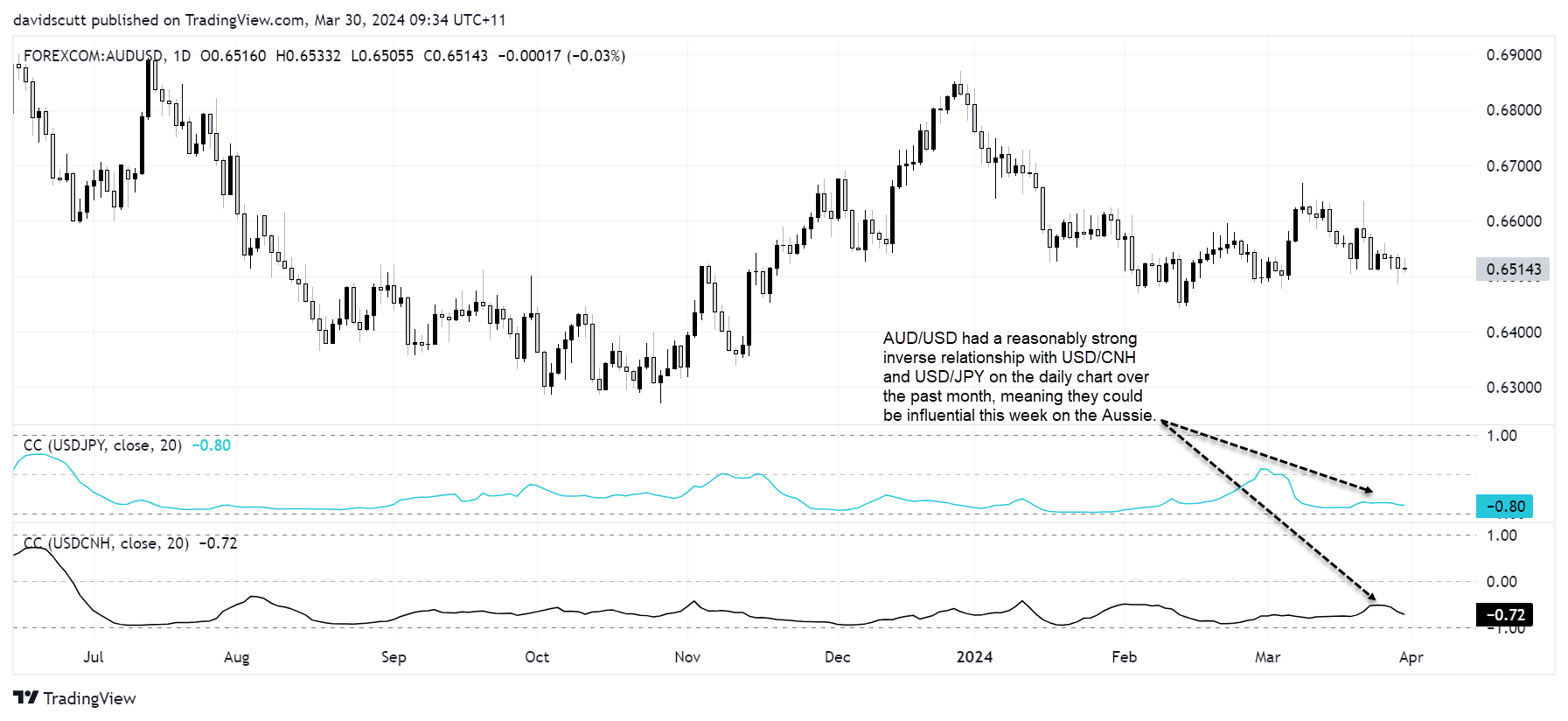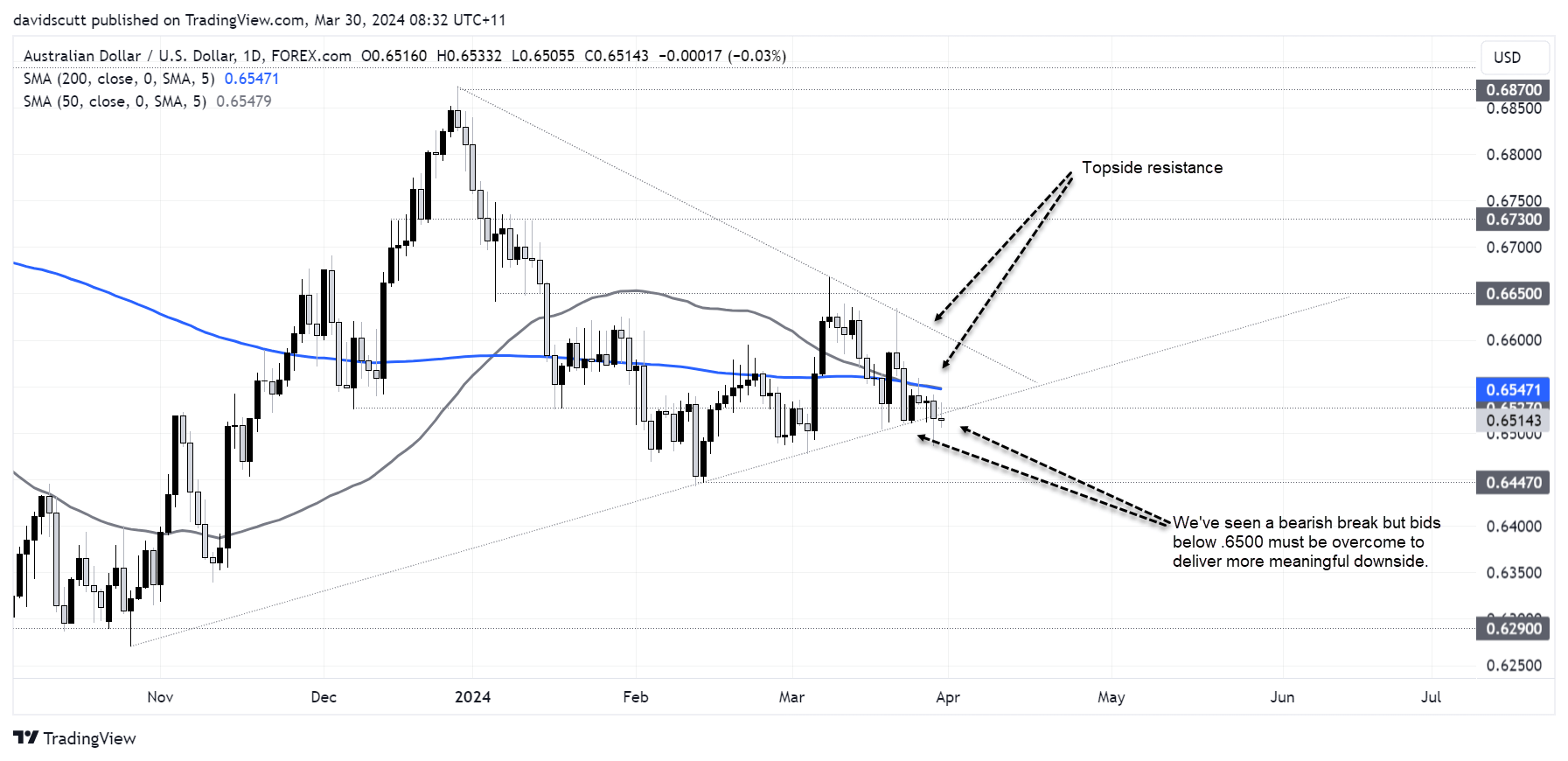
- AUD/USD remains a sell-on-rallies prospect
- US labour market data and Federal Reserve speeches dominate the risk event calendar this week
The overview
AUD/USD remains a sell-on-rallies prospect in a week where interpretation of Fedspeak and US labour market data will dominate. While the momentum and price action remain bearish, it will be imperative for the data to portray a message of continued economic strength to see meaningful downside materialise.
The key data events
Event risk for AUD/USD is skewed to the US side of the ledger with only second-tier releases in Australia. The US not only has major data but also a slew of Fed speakers, many of which markets have not heard from since the FOMC meeting in March.
The biggest event is left to last with non-farm payrolls on Friday, with the unemployment rate and average hourly earnings likely to drive the price following its release. Keep an eye on the employment change in the household survey which has been painting a far darker picture on the health of the labour market than the payrolls survey recently.
Prior to payrolls, markets will receive alternate labour market data such as the JOLTS survey, ADP employment report and jobless claims. JOLTS can generate short-term volatility on occasion, especially if it conveys a dovish message.
Elsewhere, ISM manufacturing and services PMIs are the other notable releases with readings on prices and hiring intentions the key figures to watch. Services should receive more attention given its size relative to the US manufacturing sector.
Outside the US, a shock outcome in the eurozone inflation report may elicit a reaction in AUD/USD as the euro is the largest weighting in the US dollar index (DXY). Similarly, PMIs from China may influence the Aussie given many investors use it as a China proxy.
The RBA and Fed events
Speeches from Christopher Kent and Brad Jones highlight the RBA calendar, providing an opportunity to provide views on the Australian inflation data released last week. Separately, the minutes of the RBA March meeting arrive on Tuesday, remembering the event marked the bank shifting to an explicit neutral bias.
Regarding the Fed, the calendar is busy with Williams, Mester, Barkin, Collins, Powell, Daly and Goolsbee scheduled.
Powell and Goolsbee spoke last week, so they screen as lower risk events, but Williams, Barkin, Daly and Mester are all FOMC voters this year. What they convey relative to the 3.5 rate cuts priced by markets this year will be important.
The market drivers
Even with an extensive list of known risk events, you can’t escape the reality that AUD is first and foremost an Asian currency closely linked to China, Japan and emerging markets. AUD/USD has been particularly sensitive to movements in the Chinese yuan recently, with analysis of correlations over the past month backing up this view. It’s a similar story for AUD and JPY with strong correlation between the two against the US dollar over the same period.
If JPY or CNH were to w experience a lift in volatility, it’s likely AUD will too. Given we’re at the start of a new quarter, the potential for capital flows to exacerbate market movements is elevated.

The technical picture
AUD/USD looks heavy, breaking uptrend support on Friday after the US core PCE inflation report and speech from Jerome Powell where he described the outcome as in line with expectations. However, with volumes down significantly due to Easter Friday, it’s difficult to trust the price action. As such, Monday’s moves may be instructive when it comes to whether the bearish break will stick.

In terms of levels to watch, downside breaks continue to be thwarted by bids below .6500, including last Thursday. Should that give way, a retest of the February lows around .6450 may be on the cards. Below, .6350 and .6290 are the next downside targets for bears.
As for topside levels, the 50 and 200-day moving averages successfully repelled bullish advances last week, contributing to the bearish bias and eventual downside break. Above, downtrend resistance as part of a larger symmetrical triangle pattern provides arguably an even tougher test – it is located just above .6600.
Until that downtrend breaks, the bias remains to sell rallies rather than buy dips.
-- Written by David Scutt
Follow David on Twitter @scutty
How to trade with City Index
You can trade with City Index by following these four easy steps:
-
Open an account, or log in if you’re already a customer
• Open an account in the UK
• Open an account in Australia
• Open an account in Singapore
- Search for the market you want to trade in our award-winning platform
- Choose your position and size, and your stop and limit levels
- Place the trade





